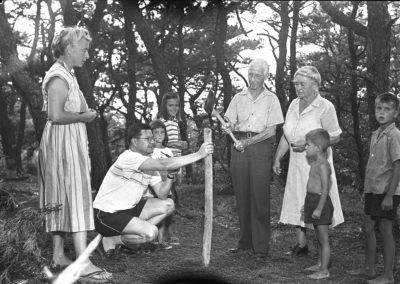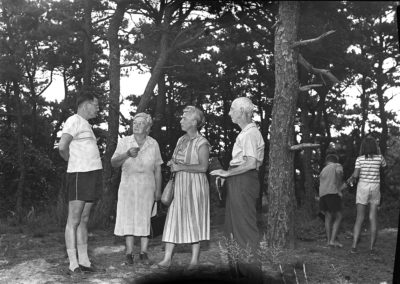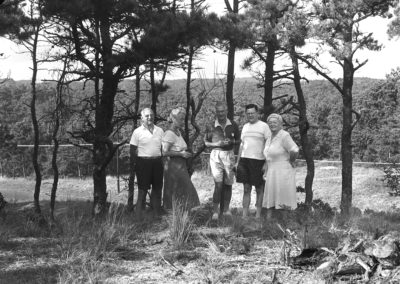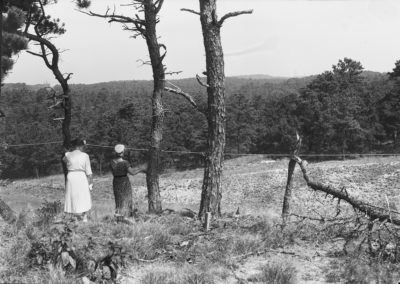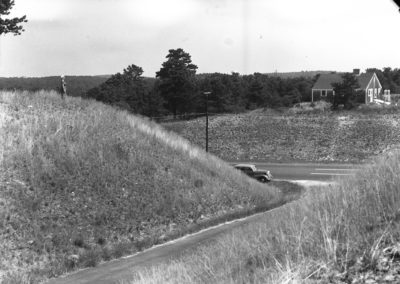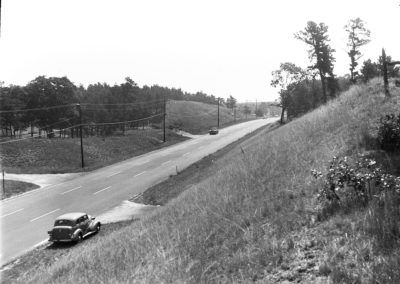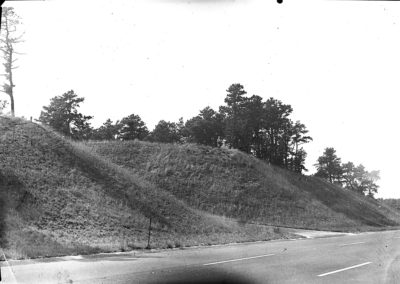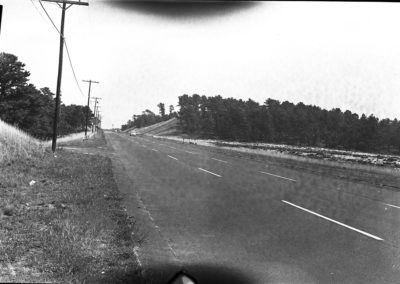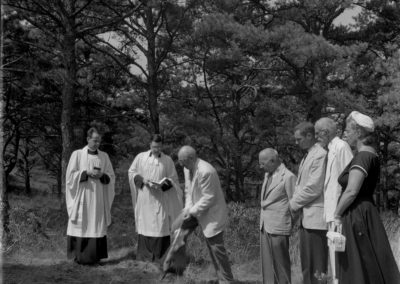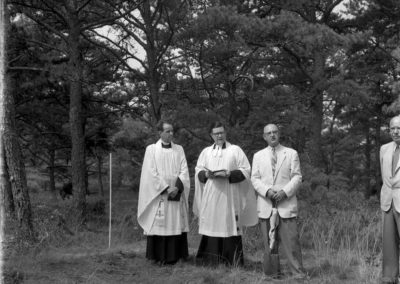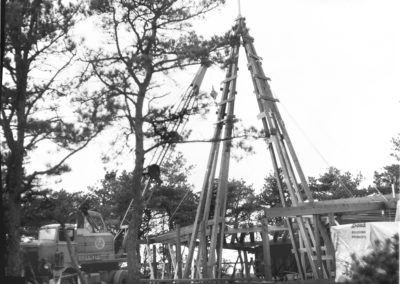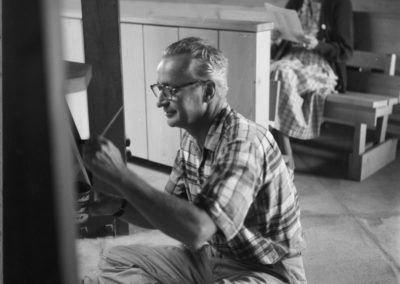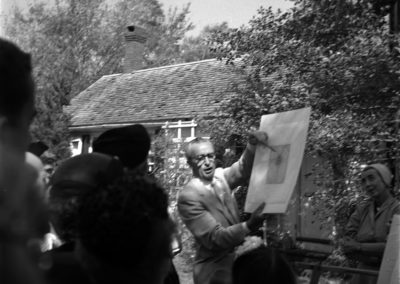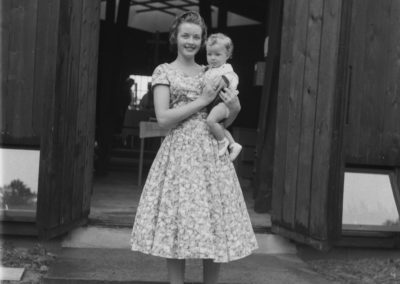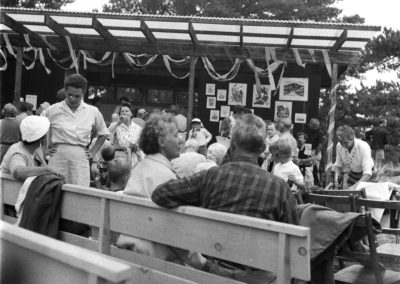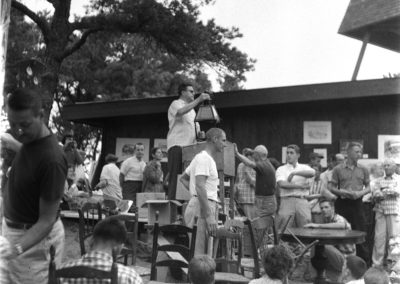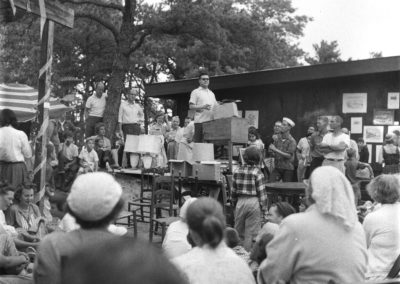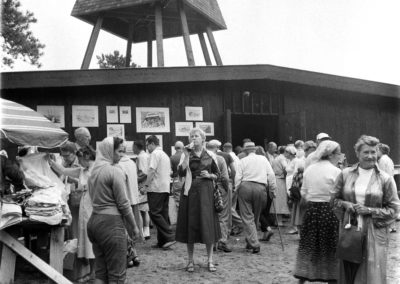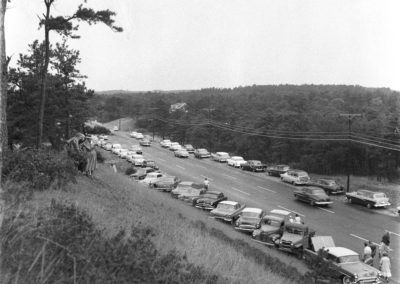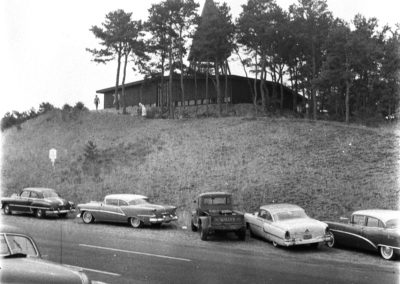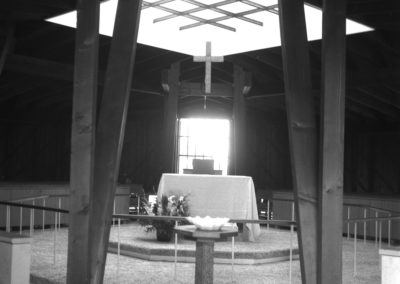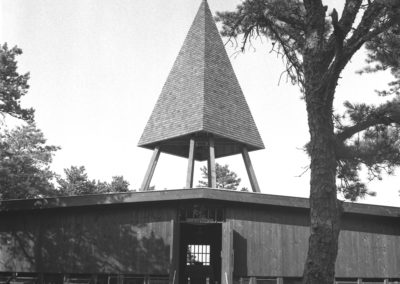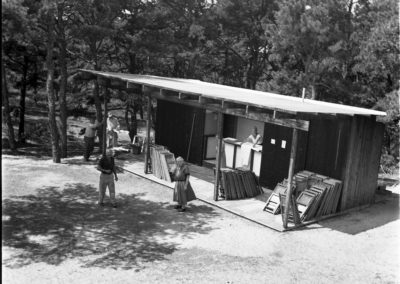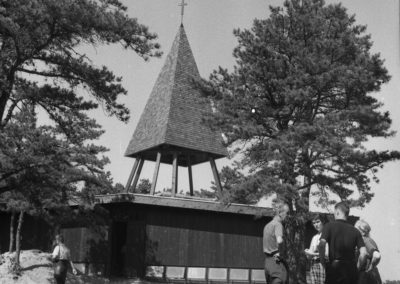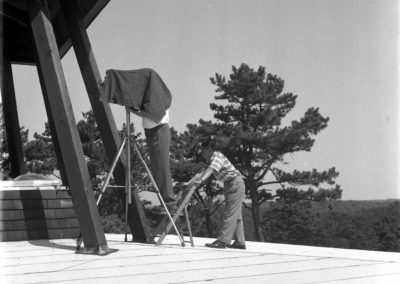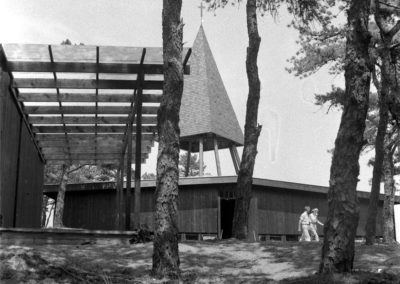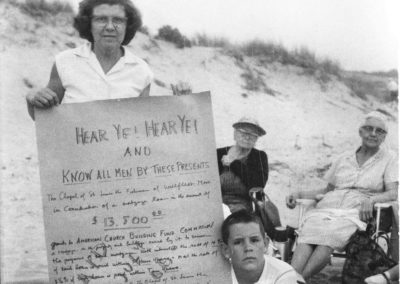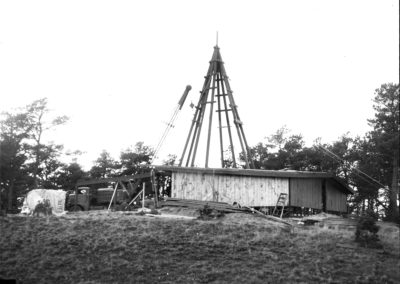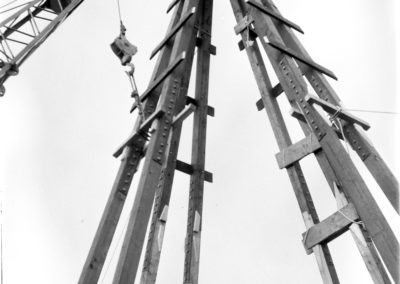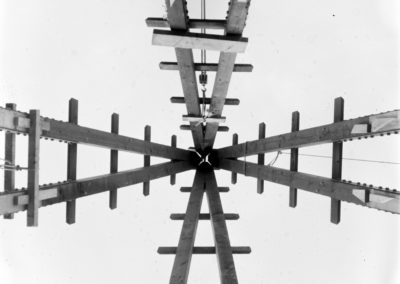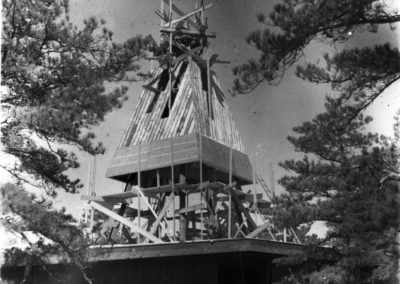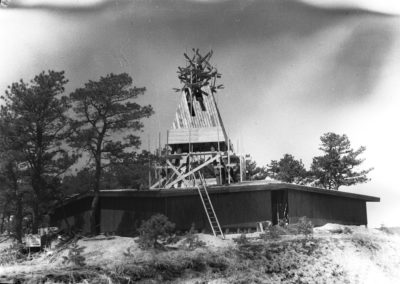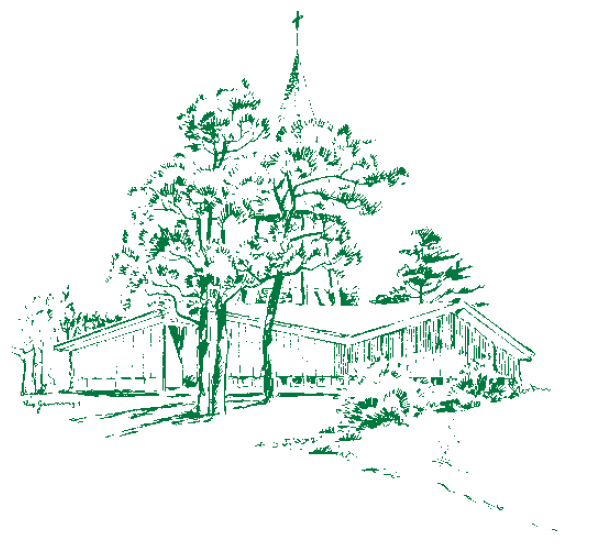Our History
The Early Days
The Chapel of St. James the Fisherman has stood in the pine grove above the highway in Wellfleet since 1956. The Chapel’s ministry actually began in 1949 when a group of Episcopalians worshipped at the Main Street home of Mr. and Mrs. Elbert L. Blakeslee. For the following six years, during July and August, Sunday services were conducted at the Congregational Church of Wellfleet. In 1951, the Chapel became a congregation of the Episcopal Diocese of Massachusetts.
Providing early leadership, James A. Pike, then Dean of the Cathedral of St. John the Divine in New York City and later Bishop of California was committed to creating a place of participation in worship by all the People of God. In 1953, Pike presented the idea of constructing a building for summer worship. The idea was enthusiastically endorsed. Mr. and Mrs. Carey E. Melville and their daughter Maud Melville Arnold generously offered to donate two acres of their land on Rt. 6, and a successful capital campaign was conducted to raise the funds necessary for the building.
The famed architect and furniture designer Olav Hammarstrom, a leader of what has come to be known as the Cape Modern Movement, volunteered his services; his artist wife Marianne Saarinen donated her time as the color and textile designer, and their friend Paul Wedlinger contributed his engineering expertise. Olav Hammarstrom worked closely with Pike to achieve a design that satisfied his two conditions, that it was a contemporary church and that it had a central altar. After long conversations with Pike and the founding congregants and many drawings, Hammarstrom came to the realization that the design need be informed by the function. In an oral interview conducted in 1982, Hammarstrom revealed, “I drew an unbelievable amount of charts until I found out that this is about the area which needs for the function…that it should be an action of the whole congregation.” And, it was on a warm summer day in July of 1957, that some 400 people gathered on the hillside to worship for the first time in the Chapel.
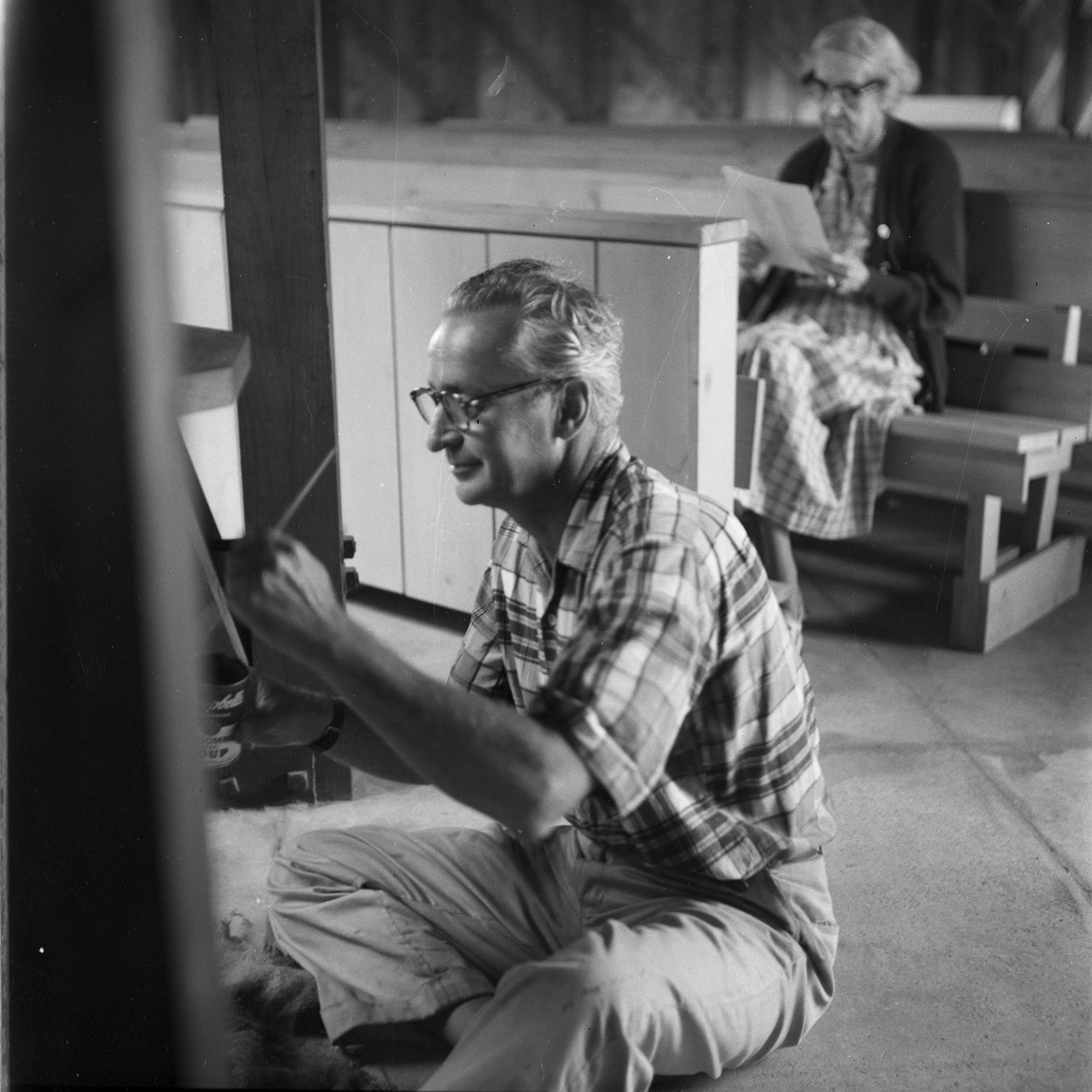
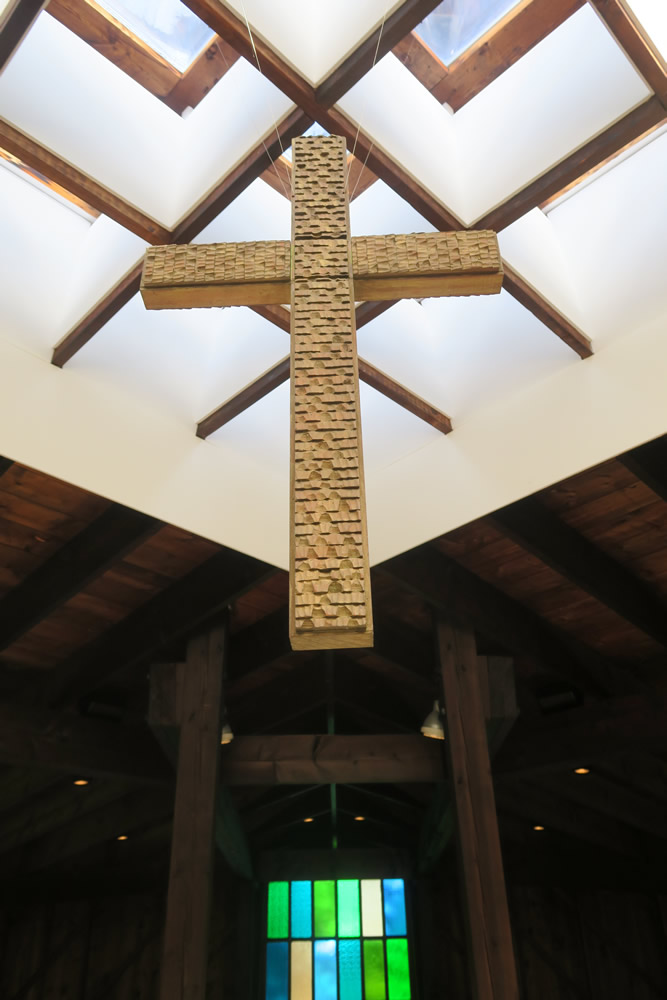
Architecture
The building was constructed to reflect the spirit of Wellfleet in both materials and design, and to express the centrality of the Eucharist and the priesthood of all believers – seating clergy and laity together around a common table. The architectural design, with a shingled steeple above the altar, interior studs and beams reminiscent of old fishing vessels, worship in the round, and a shell forming the baptismal font, initially was controversial but has proved to be formative in the Chapel’s identity.
Like a photographer, Hammarstrom used light to add a mysterious element to the interior and to lay focus on the central altar. Light floods upon the table from concealed skylights, illuminating the center of an otherwise dark space. The structure, circular in feeling, is actually a square with pews set diagonally within, so that the worshippers surround the altar. The hanging cross was carved by Mr. Hammarstrom.
The window behind the pulpit was designed with multi-paned clear glass. By the summer of 1962, the clear glass panes had been replaced with primarily green and blue glass, designed by Hungarian-born artist and color theorist György Kepes, a friend of Olav Hammarstrom and fellow Wellfleet summer resident.
Colored Glass Window Newsletter 2021
Colored Glass Window Newsletter 2020
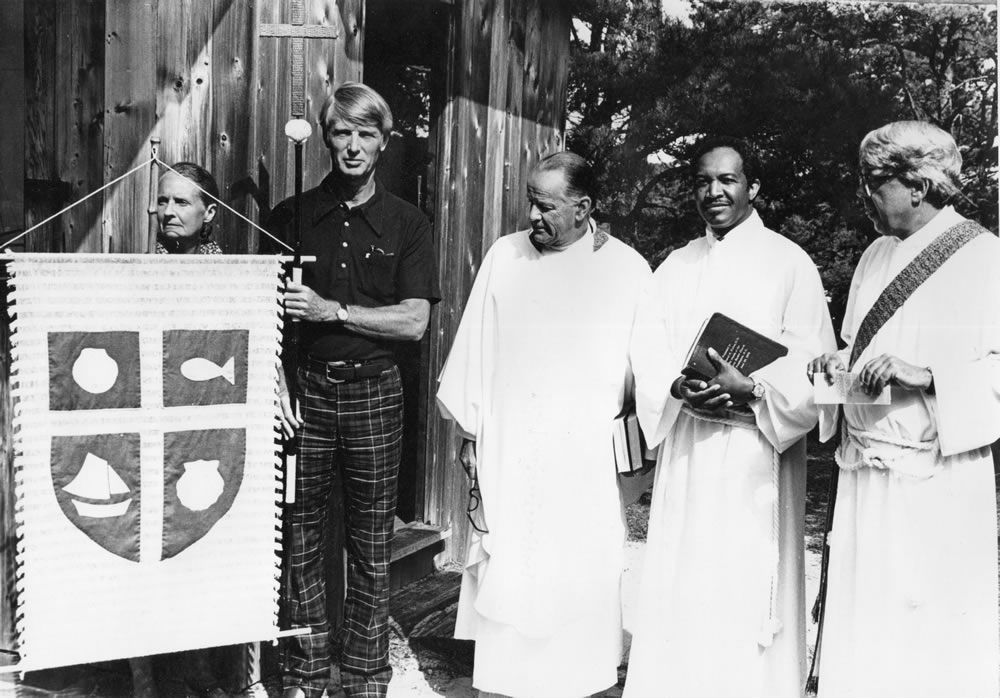
Leadership
Over the past sixty years, St. James has been served by a talented and dedicated collection of clergy who have shaped our congregational worship. In addition to Bishop Pike, the original chapel clergy team included: John Coburn, who served as Chaplain at Amherst College and Rector of Grace Church Amherst, Dean of the Episcopal Theological School, Rector of St. James’ Church in New York, and Bishop of Massachusetts; and Morgan Porteus, Rector of St. Peter’s Church Cheshire, and later Bishop of Connecticut. As the Chapel flourished, it became an important center of the movement for liturgical renewal in the 1950’s and 1960’s, including the development of a new liturgy of confirmation for trial use in the 1970’s.
After Bishops Pike, Coburn, and Porteus retired, the Chapel was served for many years by the team of Milton McC. “Mac” Gatch, Professor of Church History Emeritus at Union Theological Seminary, John “Jack” Smith, Retired Chaplain of Groton School; and Joseph M. Zorawick, Retired Rector of Christ and Saint Stephen’s Church, New York. In 2015, Danielle Thompson, now Rector of Grace Episcopal Church, Sheffield, Alabama, and Tracey Lind, Retired Dean of Trinity Cathedral, Cleveland, Ohio were called to serve as a clergy team. In 2018, Danielle stepped down to accommodate the needs of her young and growing family. Tracey continues to serve and invites distinguished clergy colleagues to preach.
Since its inception, The Chapel of St. James the Fisherman has been guided by a group of steadfast and capable volunteer lay leaders, taking seriously the ministry of the baptized.
“For more than a half century, worshippers at the Chapel have been challenged by sermons that dive deep into scripture, engage the issues of the day, and often confront the powers and principalities that seek to diminish God’s reign on earth. I truly believe that this is a place where preachers are encouraged to ‘comfort the afflicted and afflict the comfortable’ as we proclaim the good news of the Gospel.”
~ The Very Rev. Tracey Lind, Priest-in-Charge,
The Feast of St. James the Fisherman—60th Anniversary Celebration, July 23, 2017
read full sermon

Join our Email List
The Chapel of St. James the Fisherman
2317 US-6, Wellfleet, MA 02667
The Chapel is located on the west side of Route 6 on the hill just south of the Post Office and WHAT Theatre Company.
Like us on Facebook

